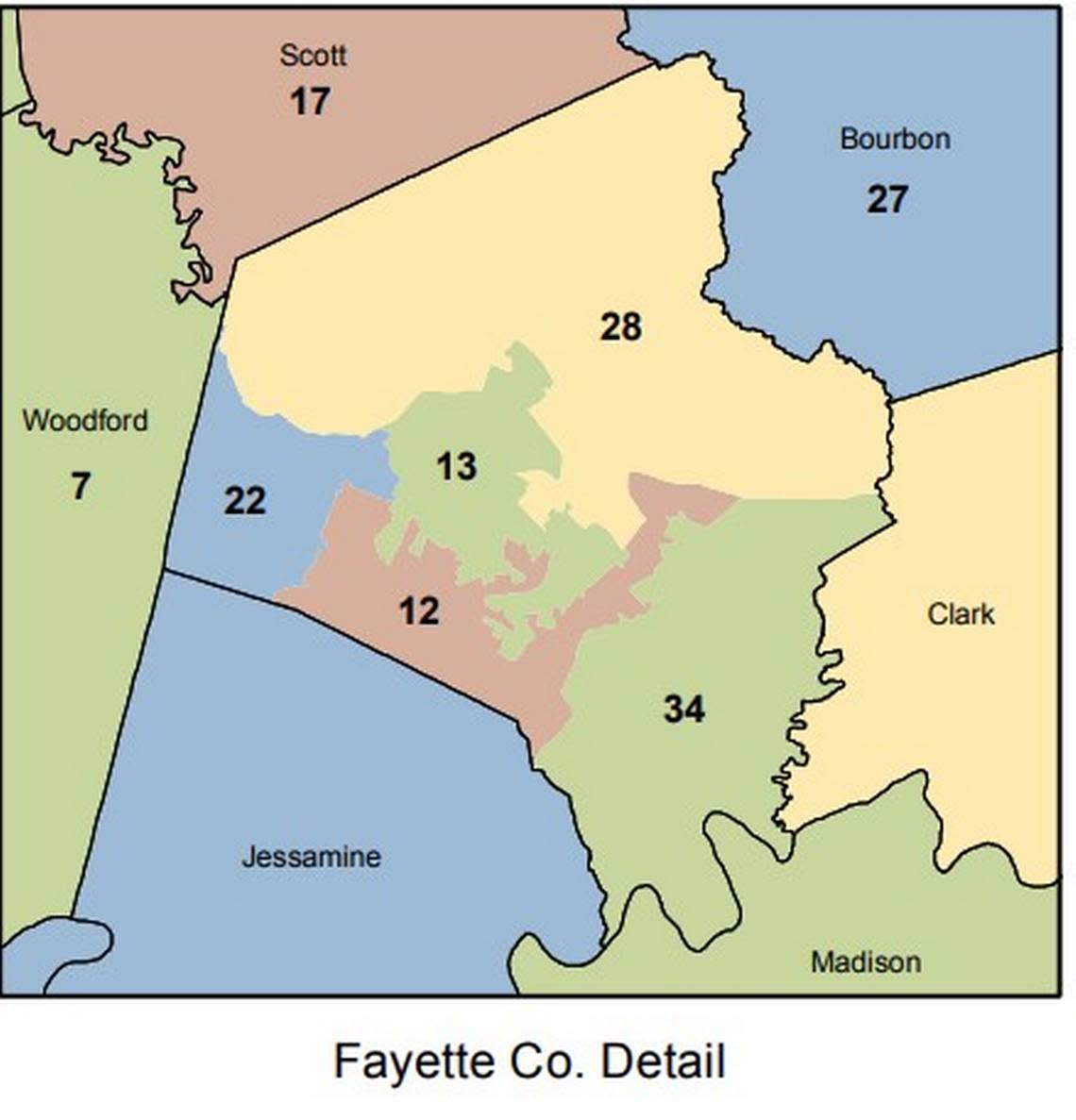Central KY candidate drawn out of Senate district withdraws, letting Dems contest race
A Senate seat that was left uncontested after the latest round of legislative redistricting will get a Democratic challenger after all.
Paula Setser-Kissick, who nearly knocked off retiring Sen. Alice Forgy Kerr, R-Lexington in 2018, had been drawn out of the 12th District when the maps were unveiled and quickly passed this January. She remained registered to run as a protest to the Republicans who drew her out – the GOP dominated the redistricting process due to their supermajorities in both chambers of the legislature – but her Thursday withdrawal shook the race up significantly.
It allowed Democrats to replace her with someone else who lives in the district.
Senate Minority Floor Leader Reggie Thomas, D-Lexington, whose district became much more tightly packed around inner Lexington’s loyal Democratic core, said that party leaders have a candidate in mind but aren’t ready to release the name of the person yet.
Setser-Kissick said on Twitter, where she announced her withdrawal, that she met with the candidate last month. Thomas said the party would “move quickly” in announcing the candidate.
The district shifted with from being located solely within Fayette, centered around Southern Fayette County, to containing only a small chunk of southwestern Fayette, paired with Mercer, Woodford and Boyle counties.
That left only Lexington-Fayette Urban County Government Councilwoman Amanda Mays-Bledsoe still living within the new district lines.
Democrats are ostensibly allowed to replace Setser-Kissick so late in the game because of a wrinkle introduced by the addition of one word in a heralded bipartisan elections bill passed in the 2021 session of the General Assembly. Lawmakers added “withdrawal” to the list of reasons a party can fill a vacancy on the ballot. Previously, only in circumstances of death and disqualification could parties replace candidates on the ballot.
Sep. 15 is the latest that vacancies can be filled via this method, and local party leadership has ten days after the Secretary of State’s office verifies the vacancy to fill it.
Thomas said that the party nominating process is similar to that which takes place for special elections. Nominees are selected by the executive committees of their district’s counties.

More new candidates?
Because of that change to the law, some candidates on both sides of the aisle have already filled in for withdrawn candidates, and there may be more to come.
House Minority Leader Joni Jenkins, D-Shively, who is retiring at the end of the year, pointed out that this already occurred in a couple races in Louisville.
Matthew Pfaadt replaced Suzanne Kugler after redistricting in a Democratic effort to challenge Rep. Kevin Bratcher, R-Louisville. Louisville Republican Ginny Mulvey-Woolridge replaced Sylvia Mond in a bid to unseat Rep. Al Gentry, D-Louisville.
One to watch in the Lexington area: House District 62. Lexington’s Michael C. Robinson was the Democratic candidate to unseat Phillip Pratt, R-Georgetown, but the new district only contains a majority of the fast-growing Scott County.
Jenkins said that party leadership “would like to field a candidate” to run against Pratt, and that some names have been floated, but hasn’t settled on one yet.
Many saw the new maps, drawn by Republicans and passed in a legislative flurry, as a sign that the Republican wave that’s led to 75-25 and 30-8 majorities in the House and Senate would continue. But a recent defeat for social conservatives in Kansas, where that state’s anti-abortion constitutional amendment failed by 18 percentage points, has some Kentucky progressives hopeful that the similar amendment on the ballot here could spell trouble for Republicans.
Thomas and Jenkins both suggested that the amendment’s presence on the ballot in Kentucky could help Democrats.
“I think we’re all watching and listening to voters on the ground,” Jenkins said. “A lot of people think the legislature’s gone too far and is very extreme, (and) Kansas was eye-opening for a lot of people.”
In the background, Democrats are still arguing in the courts that the new maps violate certain sections of the state constitution because of excessive county splitting and partisan gerrymandering, which they argue unfairly tanks their chances of reaching a proportion of legislators in Frankfort that’s representative of the state’s partisan voting behavior in statewide elections. The Democrats’ case, Graham v. Adams, is still stuck in Franklin Circuit Court. Both parties have offered extensive testimony and arguments, but Franklin Circuit Judge Thomas Wingate has yet to rule on the case.
